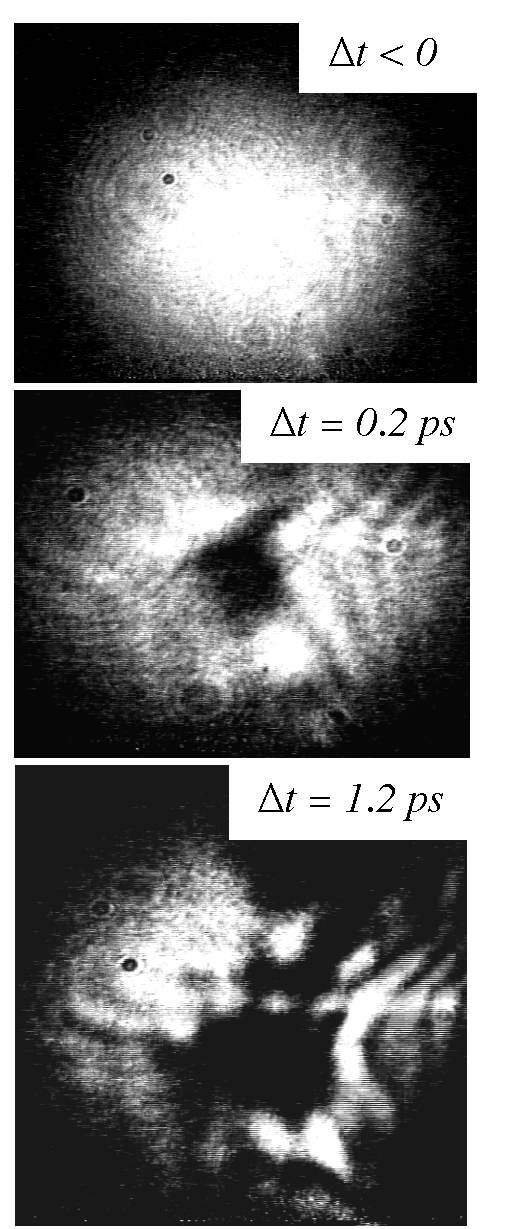
| Ѓ@Ѓ@Ѓ@Ѓ@Ѓ@Ѓ@Ѓ@Ѓ@Ѓ@Ѓ@Ѓ@Ѓ@Ѓ@Ѓ@Ѓ@Ѓ@Ѓ@Ѓ@Ѓ@Ѓ@Ѓ@Ѓ@Ѓ@Ѓ@Ѓ@Ѓ@Ѓ@Ѓ@Ѓ@Ѓ@Ѓ@Ѓ@Ѓ@
Ѓ@Ѓ@Ѓ@Ѓ@Ѓ@Ѓ@
No.8 |
| Ultrafast
radial transport in micron-size laser produced plasmas |
University
of Texas at Austin |
|
Professor Mike Downer (University of Texas-Austin) visited ILE January 11-14, 2005 and presented a seminar entitled ЃgUltrafast radial transport in micron-scale laser-produced plasmasЃh. In past years, Prof. Downer and his Texas group have performed numerous experiments involving intense femtosecond laser interactions with solid targets, including measurements of the melting of silicon1 and carbon,2 femtosecond thermionic electron emission3 and vacuum heating.4 His group is also active in studies of laser wakefields5 and preformed plasma channels6 in underdense plasmas. He is collaborating with Todd Ditmire, who is leading development of the 200 J, 150 fs Texas petawatt laser, scheduled for completion in 2007, for high energy density physics studies. While at ILE, Downer presented results of a recent experiment in which high contrast, 25 fs p-polarized Ti: sapphire laser pulses were focused to relativistic intensity (> 1018 W/cm2) in a spot of only 1.5 microns diameter onto an Al target. The heated region was imaged in reflection by a loosely-focused, time-delayed probe pulse viewed through microscope optics, a technique that Downer developed on larger spatial scales in early work.1 The heated electrons appeared as a dark region that was initially localized within the pump-excited area, as shown in the middle panel of Fig. 1. At later time delays, the hot region expanded radially at ~108 cm/s for about 1 ps, reaching a final diameter of ~5 microns (see bottom panel of Fig. 1), close to the x-ray source diameter that was measured independently from the same target. Downer worked with K. MimaЃfs group to explore the physics underlying the observed expansion. Of particular interest was a possiblerelationship with surface hot-electron currents observed in recent experiments at ILE.7 ЃT. Nakamura ran a PIC simulation using the conditionsЃ@of DownerЃfs experiment. Preliminary results indicated that strong surface currents accompanied by megagauss magnetic fields were indeed present. Further simulations and discussions are continuing in an effort to reach a quantitative interpretation. 1.
M. C. Downer et al., J. Opt. Soc. Am. B 2, 595 (1995); Phys. Rev. Lett.
56, 761 (1986).
Fig. 1 Images of an Al surface at 3 time delays ѓўt from excitation by a tightly focused heating pulse. Top: before heating pulse; Middle: ѓўt = 200 fs (dark region shows hot electrons, and is same size as pump focus); Bottom: ѓўt = 1.2 ps (hot electrons expanded to size of x-ray source)
ЃiNO.8) |
| Ѓ@Ѓ@Ѓ@Ѓ@Ѓ@Ѓ@ |
